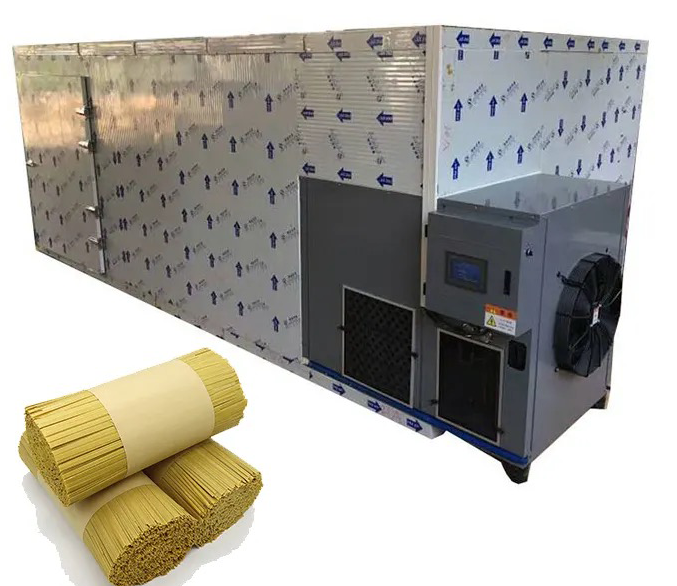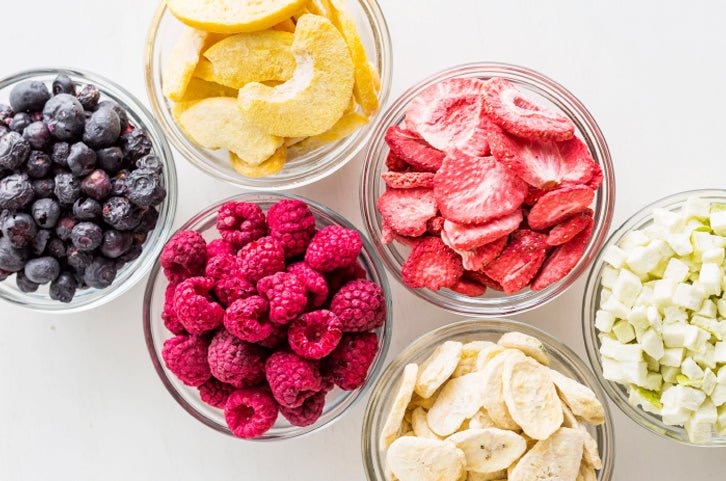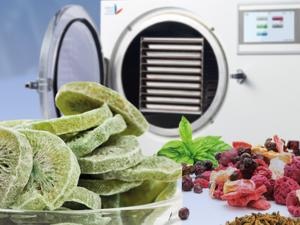
Content Menu
● Understanding Food Dehydrators
● Heat Pump Dryer vs Condenser Dryer
>> Heat Pump Dryers
>> Condenser Dryers
● Benefits of Using Food Dehydrators
● Choosing the Right Food Dehydrator
● Popular Applications of Food Dehydration
● Best Practices for Food Dehydration
● Conclusion
● FAQ
>> 1. What is a food dehydrator?
>> 2. How does a heat pump dryer work?
>> 3. What are the benefits of using a condenser dryer?
>> 4. Can all types of food be dehydrated?
>> 5. Are heat pump dryers more eco-friendly?
● Citations:
In the realm of food preservation, the choice of drying technology can significantly impact the efficiency and quality of the final product. Food dehydrators are essential appliances that help extend the shelf life of various foods by removing moisture, thereby preventing the growth of bacteria and mold. This article will delve into the intricacies of food dehydrators, focusing on two popular drying technologies: heat pump dryers and condenser dryers. We will explore their mechanisms, benefits, and suitability for different applications in food processing.

Understanding Food Dehydrators
Food dehydrators are specialized appliances designed to remove moisture from food, preserving it for longer periods. The process involves circulating hot air around the food, which evaporates moisture effectively. There are various types of food dehydrators available, including:
- Electric Dehydrators: These are the most common and efficient types. They often come with built-in fans, timers, and temperature controls to ensure even drying.
- Solar Dehydrators: Utilizing solar energy, these dehydrators are eco-friendly but may require more time to achieve desired results.
- Commercial Dehydrators: Designed for large-scale operations, these units can handle significant quantities of food and often have advanced features for precise control.
Electric dehydrators are particularly favored for their convenience and efficiency, making them ideal for both home users and commercial applications.
Heat Pump Dryer vs Condenser Dryer
When selecting a food dryer, understanding the differences between heat pump and condenser dryers is crucial. Both technologies have unique advantages and drawbacks that cater to various needs.
Heat Pump Dryers
Heat pump dryers operate using a closed-loop system that recycles hot air to remove moisture from food. They work at lower temperatures compared to condenser dryers, typically around 50°C. This gentler approach is beneficial for preserving the nutritional quality of food while also being more energy-efficient. Key features include:
- Energy Efficiency: Heat pump dryers consume about half the energy per load compared to condenser dryers, making them cost-effective in the long run.
- Gentle Drying: The lower temperatures reduce the risk of damaging delicate foods or altering their flavor profiles.
- Versatile Placement: Since they do not require venting, heat pump dryers can be installed in various locations without extensive setup.
- Environmentally Friendly: With lower energy consumption, heat pump dryers contribute less to carbon emissions compared to traditional drying methods.
Condenser Dryers
Condenser dryers utilize higher temperatures (70-75°C) to dry food quickly. While they may be faster than heat pump dryers, they consume more energy and can potentially compromise the quality of more sensitive items. Advantages include:
- Faster Drying Times: Ideal for users who need quick results without waiting long periods.
- Lower Initial Cost: Generally more affordable upfront than heat pump models, making them accessible for budget-conscious buyers.
- Simplicity: Easy to operate with straightforward controls; ideal for users looking for a no-fuss solution.
- Compact Design: Many condenser dryers have a compact design that allows them to fit into smaller spaces without sacrificing performance.
| Feature | Heat Pump Dryer | Condenser Dryer |
| Energy Efficiency | High (uses less energy) | Lower (higher energy consumption) |
| Drying Temperature | Low (gentle on food) | High (faster drying) |
| Cost | Higher initial investment | Lower initial investment |
| Placement Flexibility | High (no vent required) | Moderate (may require drainage) |
| Environmental Impact | Lower carbon footprint | Higher carbon footprint |
Benefits of Using Food Dehydrators
Using food dehydrators offers numerous advantages that extend beyond simple preservation:
- Reduction in Food Waste: Dehydrating excess produce helps minimize waste by extending its shelf life.
- Nutritional Retention: Properly dried foods retain most of their essential nutrients compared to other preservation methods like canning or freezing.
- Healthy Snack Options: Dehydrated foods such as fruits and jerky provide nutritious snack alternatives without added preservatives or sugars.
- Lightweight Storage: Dehydrated foods take up less space and are easier to transport, making them perfect for camping or hiking trips.
- Cost Savings: By preserving seasonal produce or bulk purchases, users can save money in the long term.
Choosing the Right Food Dehydrator
When selecting a food dehydrator, consider factors such as:
- Volume Needs: Determine how much food you plan to dehydrate regularly. For small batches, a home unit may suffice; for larger quantities, consider commercial models.
- Types of Food: Some dehydrators perform better with specific types of food. If you plan to dry herbs or delicate fruits, prioritize a model with adjustable temperature settings.
- Energy Efficiency: Assess your energy costs and choose a model that balances performance with energy consumption. Heat pump dryers may have a higher initial cost but can save money over time through lower energy bills.
- Ease of Use: Look for features like digital controls, timers, and easy-to-clean components that enhance user experience.

Popular Applications of Food Dehydration
Food dehydration has become increasingly popular in various sectors due to its versatility:
- Home Use: Families often use dehydrators to create healthy snacks like dried fruits or vegetable chips. This method allows them to control ingredients and avoid preservatives found in store-bought options.
- Commercial Food Production: Businesses utilize large-scale dehydrators to produce snacks like beef jerky or fruit leathers. The ability to process large batches efficiently makes dehydration an attractive option for manufacturers.
- Emergency Preparedness: Dehydrated foods are lightweight and have long shelf lives, making them ideal for emergency kits or long-term storage solutions.
- Camping and Outdoor Activities: Hikers and campers often rely on dehydrated meals due to their convenience and ease of transport. Rehydrating meals on-site is quick and requires minimal preparation.
Best Practices for Food Dehydration
To achieve optimal results when using a food dehydrator:
1. Prepare Food Properly: Wash and cut fruits or vegetables into uniform sizes to ensure even drying. Blanching certain vegetables before dehydration can enhance color retention and flavor.
2. Use Quality Ingredients: Select fresh produce free from blemishes or spoilage. The quality of your raw materials directly influences the final product's taste and texture.
3. Monitor Drying Progress: Check periodically during the drying process to avoid over-drying or under-drying your foods. Adjust temperature settings as needed based on the type of food being processed.
4. Store Dried Foods Correctly: Once dried, store foods in airtight containers away from light and moisture to maintain freshness. Vacuum sealing is an excellent option for long-term storage.
5. Experiment with Flavors: Consider marinating meats or seasoning vegetables before dehydration to enhance flavors in your final products.
Conclusion
In summary, both heat pump and condenser dryers have distinct advantages depending on your specific needs in food preservation. If energy efficiency and gentle drying are your priorities, a heat pump dryer is likely the better choice. Conversely, if you require faster drying times and a lower initial investment, a condenser dryer may suit your needs better. Ultimately, your decision should be based on factors such as budget, drying requirements, and the types of foods you plan to dehydrate.
Food dehydration not only helps preserve nutrients but also provides an opportunity for creativity in meal preparation—allowing you to enjoy healthy snacks year-round while minimizing waste.

FAQ
1. What is a food dehydrator?
A food dehydrator is an appliance that removes moisture from food to preserve it for longer periods by circulating hot air around it.
2. How does a heat pump dryer work?
A heat pump dryer uses a closed-loop system to recycle hot air that absorbs moisture from food at lower temperatures, making it energy-efficient and gentle on delicate items.
3. What are the benefits of using a condenser dryer?
Condenser dryers dry food quickly using higher temperatures but consume more energy; they are ideal for users needing fast results without concern for energy costs.
4. Can all types of food be dehydrated?
Most fruits, vegetables, meats, and herbs can be dehydrated; however, foods high in fat or oil do not dehydrate well due to potential spoilage issues.
5. Are heat pump dryers more eco-friendly?
Yes, heat pump dryers are generally more eco-friendly because they use less energy compared to conventional dryers like condenser models.
Citations:
[1] https://www.healthline.com/nutrition/dehydrated-food
[2] https://www.vice.com/en/article/cosori-food-dehydrator-review/
[3] https://www.canstarblue.com.au/appliances/heat-pump-vs-condenser-dryer/
[4] https://www.siemens-home.bsh-group.com.hk/en/appliances/laundrycare/tumble-dryers/comparison-heat-pump-dryer-condenser-dryer
[5] https://www.familyhandyman.com/article/heat-pump-dryer/
[6] https://learn.eartheasy.com/guides/a-beginners-guide-to-dehydrating-food/
[7] https://www.weforum.org/stories/2021/07/food-dehydrator-reducing-waste/
[8] https://www.greencentral.co.uk/heat-pumps/heat-pump-vs-condenser-dryer/
[9] https://www.beko.co.uk/support/faqs/tumble-dryers/differences-between-heat-pump-and-condenser-dryer
[10] https://www.mitchellcooper.co.uk/what-is-a-dehydrator-commercial-buying-guide











